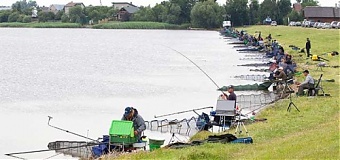Baltic States – CIS, Estonia, Legislation, Markets and Companies, Russia
International Internet Magazine. Baltic States news & analytics
Saturday, 20.04.2024, 14:35
Perch, perch pike harvesting quotas in Estonia to be cut significantly for 2021
 Print version
Print version |
|---|
"In the estimate of scientists from both countries, stocks will be lower next year for most commercially harvested fish species. When it comes to the most important commercially harvested fish species of the lake, perch, a new significant generation of fish will reach a size suitable for fishing only in three years, and in the case of perch pike, in two years. Until then, we must make do with the fish that are in harvesting size now," said Marku Lamp, deputy secretary general of the Estonian Ministry of the Environment who headed the Estonian delegation to the talks.
Estonian and Russian fishers taken together will be allowed to harvest 520 tons of perch and 490 tons of perch pike in the border lakes next year, which is respectively 400 tons and 690 tons less than in 2020.
"It has to be admitted that the quotas for 2020 were also quite big compared with the average for the past decade," Lamp said.
The quota for European whitefish will be cut by 90 tons to 80 tons in 2021.
Bream stocks meanwhile continue to be in a good shape, according to scientists, and of that fish species 1,165 tons, 180 tons more than in the current year, will be allowed to be harvested in 2021.
The Estonian official said that both sides have agreed to take into consideration, as a lesson, the need to be cautious in imposing higher quotas in years when the stocks are in good shape but a clear negative trend can be seen ahead.
"This is in order to avoid large fluctuations in the quota in subsequent years, which are significantly more difficult for the fishers to cope with," he said.
It was also agreed that scientists from both countries will conduct additional research in August and September of next year to establish the optimal mesh size for demersal seine in order to bring damage to the perch population to a minimum. Specifically, a mesh size needs to be found which lets through most undersized fish, as otherwise many undersized fish that are not survivable enough for release may end up in catches.
The meeting also agreed about the possibility of the carryover of unused quotas into the next year. While the possibility of carryovers will not make up for the reduction in quotas next year, it will nevertheless be of some help in increasing potential catches.
- 28.01.2022 BONO aims at a billion!
- 30.12.2020 Накануне 25-летия Балтийский курс/The Baltic Course уходит с рынка деловых СМИ
- 30.12.2020 On the verge of its 25th anniversary, The Baltic Course leaves business media market
- 30.12.2020 Hotels showing strong interest in providing self-isolation service
- 30.12.2020 EU to buy additional 100 mln doses of coronavirus vaccine
- 30.12.2020 ЕС закупит 100 млн. дополнительных доз вакцины Biontech и Pfizer
- 29.12.2020 В Латвии вводят комендантский час, ЧС продлена до 7 февраля
- 29.12.2020 Latvia to impose curfew, state of emergency to be extended until February 7
- 29.12.2020 Президент Литвы утвердил бюджет 2021 года
- 29.12.2020 В Риге можно изолироваться в трех гостиницах








 «The Baltic Course» Is Sold and Stays in Business!
«The Baltic Course» Is Sold and Stays in Business!

